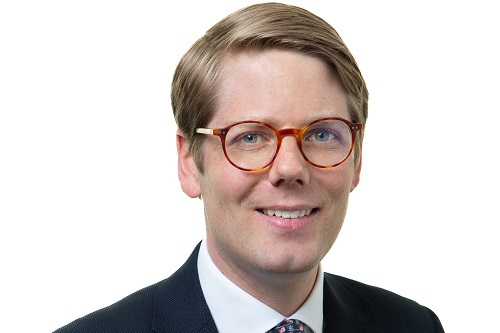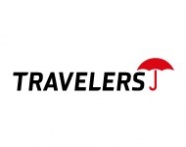After a financial crisis, bankruptcies often spike - they don’t have to

Authored by Graham Constable (pictured) Managing Director, Management Liability, Travelers Europe
What we learned from the 2008 Global Financial Crisis
Running a company these days isn’t a task for the faint of heart. Businesses have been juggling the highest inflation in decades, interest rates that continue to climb, rising taxes and more stringent regulation. That’s all against a backdrop of ongoing supply chain challenges, growing cyber risk, the ever-broad ‘ESG’ risk, and a workplace still in transition after a global pandemic.
In the insurance sector, we view these events as indicators of what’s likely to come. When Winston Churchill said that those that fail to learn from history are doomed to repeat it, he probably wasn’t thinking about Directors & Officers liability, but the message still applies. As insurers, studying claim trends over many years helps us identify patterns – lessons we use to help our clients anticipate and protect against similar scenarios when they arise at a later date.
What’s coming?
Based on what we’re observing in the economy now, we expect specific trailing problems to occur in the coming year. A rise in company bankruptcies is one of them. We know this because we have seen it happen before.
For example, over time it’s become clear that economic downturns lead to higher Directors & Officers (D&O) claims. A study from Marsh found that the firm received an average of 200-300 D&O claims in the UK from 2005-2007. Once the 2008 Global Financial Crisis (GFC) set in, claims notifications increased 75% to around 500 in 2008, peaking above 1,600 in 2012. Claims followed a similar path in the US. The insurance data provider Advisen found that D&O claims totalled about 1,000 in 2006 and then doubled at their peak in 2011. If we look back at the years following the GFC, bankruptcy was one of the biggest sources of D&O claims.
So, let’s fast-forward too today. While the combination of triggers that created our current economic climate may differ from those of the GFC, there are clear parallels between the 2008 downturn and the challenges we’re experiencing now. As inflation persists in the UK, rising interest rates are triggering an uptick in defaults. EY reported that profit warnings from UK companies increased 50% in 2022, driven largely by increasing overhead costs.
Companies with debt face added pressure as interest rates increase. Even businesses that managed to renegotiate rates after the COVID-19 pandemic began – when interest rates were still low – face an impending date when their rate will change. How will they manage their increased costs?
Unfortunately, many companies can’t and they tip into insolvency. Right now, as businesses strain under inflationary pressures, increased interest rates and wider fears of recession, we’re starting to see the impact of this in the form of higher levels of insolvencies across England and Wales. March 2023 saw the highest number of company insolvencies in a month since 2009. And, total insolvencies rose to 22,109 in 2022 – a 57% increase from a year earlier.
We have observed a similar trend in the US too. Last year, there were heightened bankruptcy levels in the US across a wide mix of companies. This year, market data from S&P Global reported more than 230 corporate bankruptcy filings in the US, more than double the number of filings for the same period in 2022. This environment has led some in the insurance industry to consider whether D&O cover, traditionally a backstop for companies in times of challenge, could become a source of liquidity for companies in the future.
What we can do about it
Companies can make their best case for obtaining the insurance protection they need if they take steps to fortify themselves against the strains of the economic climate. They must demonstrate how they are managing costs now, as well as protecting against potential increases in costs and other risks down the line.
At a time when challenges abound, it’s especially critical for companies to have the right cover. Times of instability and uncertainty can be nerve-wracking for companies. The pressures can feel unprecedented.
This is why they must also choose their insurer wisely. Companies need to be able to trust that when something goes wrong, their insurer will be there for them and has the financial strength to pay claims. Partnering with an established insurer can help a company manage its risks with an eye toward history, ensuring it has the protection it needs to navigate through times of financial strain – both now and into the future.
Graham Constable is Managing Director, Management Liability at Travelers Europe, a subsidiary of Travelers, which carries a AA financial strength rating from Standard & Poors.
About Travelers
We wrote the first auto insurance, the first aircraft liability insurance, and even the first personal accident cover for astronauts.
In today’s fast-changing world, this heritage of adventure really counts. With an extended network of underwriting, claims management, and industry experts in 125 countries, we’re here to insure your clients’ ambitions – no matter their size and scope. Our expertise and experience deliver policies that help them continue their journey.
With businesses facing ever more emerging and evolving issues, our suite of insurance products offers bespoke cover for each risk, and our commitment to genuine, caring partnerships means we’ll always be there to advise and support our clients and our broker partners, – whatever the future holds.
The Travelers Companies, Inc. (“TRV”) is a leading provider of property liability insurance for motor, home and business. The Group has more than 30,000 employees and operations in the United States, Canada, UK and Ireland.
The group has total assets of approximately $110 billion, shareholders’ equity of $26 billion and total revenue of $32 billion, as of December 31, 2019. Our European based operations offer our customers a wide range of coverage through Travelers Insurance Company Limited, Travelers Syndicate Management Limited (Syndicate 5000 at Lloyd’s), Travelers Underwriting Agency Limited and Travelers Insurance Designated Activity Company.

